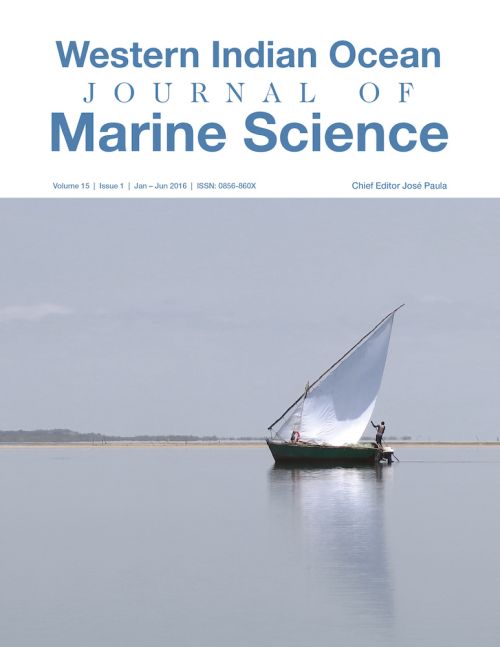Main Article Content
Current status of sea turtle protection in Lamu Seascape, Kenya: Trends in nesting, nest predation and stranding levels
Abstract
Temporal and spatial trends in sea turtle nest protection, predation and mortalities in the Lamu archipelago, Kenya were investigated based on nesting beach monitoring efforts conducted among five locations comprising 34 beaches. The nesting data was collected for a period of 17 years from 1997 – 2013 through beach patrols using standardized protocols while mortality data spanned from 2001 – 2013. The causes of mortality were determined through general external examination. The green turtle, hawksbill, olive ridley and loggerhead turtle were recorded in the area. Out of a total of 2,017 nests recorded, 64.4% (n = 1299) were translocated while 10.2% were predated. Predation levels were not significantly affected by seasonality (p > 0.05); although the levels were lower during the wet Southeast Monsoon (SEM) season (9.2 ± 2.2 %) compared to the Northeast Monsoon (NEM) season (14.8 ± 3.0 %). A total 227 mortality cases were recorded between 2001 and 2013 of which fishery- related causes were the highest representing 53%. This was followed by unknown causes which constituted 20%, shark attacks (13%) and the tumor causing viral disease fibropapillomatosis (11%). Overall, the highest number of mortalities was recorded for Mkokoni (35%) while the lowest was recorded for Mvundeni (4%). Green turtles comprised 79% of the mortality cases recorded with a mean size range of 68.9 ± 1.9 cm CCL. The incidences of mortality occurred year-round; however, the incidence of strandings was higher during the dry NEM season in the months of January to March when fishing effort is also highest. The success of sea turtle conservation efforts in the Lamu seascape is clearly demonstrated by the increased nesting activity over time, as well as the reduced trend on sea turtle nest predation levels. To continue this success, it is vital that sea turtle conservation efforts including a comprehensive monitoring programme are supported.






